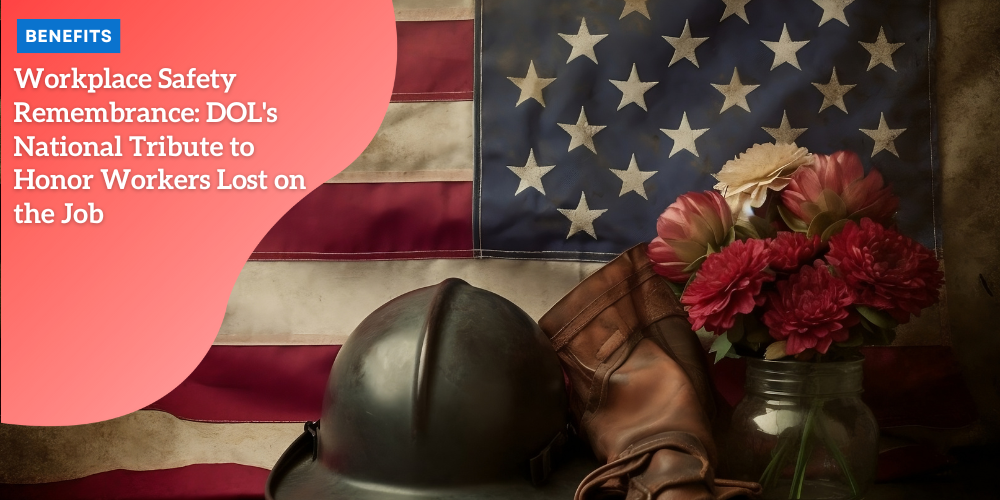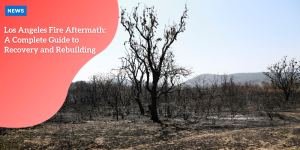Workplace Safety Remembrance: DOL’s National Tribute to Honor Workers Lost on the Job

Introduction to Workers Memorial Day
Overview of the Upcoming National Workers Memorial Day Program on April 24, 2025
Workers Memorial Day is a time to honor the men and women who lost their lives while working to support themselves and their families.
Anúncios
On April 24, 2025, the U.S. Department of Labor will hold the national Workers Memorial Day program at their Washington headquarters.
This solemn event brings together families and loved ones from across the country to pay tribute to these fallen workers and recognize the survivors.
Significance of Honoring Workers Who Have Lost Their Lives on the Job
The significance of Workers Memorial Day lies in the acknowledgment of those who made the ultimate sacrifice in their workplaces.
Anúncios
It’s a time to reflect on the lives lost and to commit to improving safety standards so that all workers can return home safely at the end of each day.
Statistics Highlighting Workplace Fatalities
According to recent data, approximately 15 people in the U.S. lose their lives daily due to work-related injuries.
By honoring these workers annually, we shine a light on the persistent issue of workplace fatalities and reinforce the collective responsibility to strive for safer work environments.
Anúncios
Attendees at the national Workers Memorial Day program will hear from key figures, including U.S. Secretary of Labor Lori Chavez-DeRemer, who will emphasize the pivotal role of workplace safety.
This commitment is not just a responsibility of the government but is shared by employers, labor unions, safety professionals, and workers themselves, as they all work together to prevent future tragedies and honor those who have lost their lives on the job.
This day also marks a collective journey toward safeguarding the workforce, ensuring that every worker’s contribution is valued and protected.
This collective homage transitions seamlessly into the broader community observances, reinforcing the united commitment to protecting our workforce.
The National Commemoration Event
Ceremony at the Department of Labor’s Washington Headquarters
The 2025 National Workers Memorial Day event will take place at the U.S. Department of Labor’s Washington headquarters on April 24.
The ceremony, scheduled to commence at 1 p.m. EDT, stands as a somber yet important tribute to American workers who have tragically lost their lives while on the job.
This event draws families from across the United States, giving them a space to honor and remember their loved ones.
Introduction to Key Speakers
Prominent figures are slated to speak at this year’s memorial event.
The keynote address will be delivered by Secretary of Labor Lori Chavez-DeRemer.
Her commitment to improving workplace safety and advocating for workers’ rights will set the tone for the ceremony.
Their insights and experiences will highlight the ongoing efforts and challenges in enhancing workplace safety standards.
Bringing Families Together
A unique and touching aspect of the national commemoration event is how it brings together families from various regions of the country.
These gatherings provide survivors and loved ones a chance to share their stories, find solace in a supportive community, and collectively honor the memories of those who have passed.
Such encounters underscore the significance of collective grieving and healing, as well as the enduring impact of workplace fatalities on families.
Commemorating these workers is not just about remembering those who have been lost, but also about fostering a collective commitment to preventing future tragedies.
By bringing together government leaders, safety advocates, and grieving families, the event strengthens the resolve to create safer workplaces for all.

Historical Significance of Workers Memorial Day
April 28 is a day marked with great significance in the realm of workplace safety—it commemorates the founding of the Occupational Safety and Health Administration (OSHA) in 1971.
OSHA’s creation followed the passage of the Occupational Safety and Health Act of 1970, a landmark legislation that sought to ensure safer working conditions for all American workers.
The week of Workers Memorial Day is a poignant time to reflect on the historical journey of occupational safety and commit to the prevention of workplace hazards.
Evolution of the Observance
Workers Memorial Day has evolved over the years into a day of remembrance and renewed commitment.
Initially, it served as a tribute to those who lost their lives due to work-related accidents.
Over time, it has grown to also include a broader advocacy for workplace safety improvements.
The observance encourages both reflection on past losses and action toward preventing future tragedies by reinforcing the importance of stringent safety measures.
A Day of Remembrance and Commitment
The idea for Workers Memorial Day gained momentum as labor unions and safety advocates recognized the need for a dedicated day to honor fallen workers and highlight ongoing safety challenges.
Since its inception, this day has been about more than mourning; it’s about renewing collective efforts to make workplaces safer.
Safety professionals, unions, employers, and workers join forces to remember those who have died on the job and to advocate for continuous enhancements in safety standards and practices.
This strong tradition of remembrance and commitment has solidified Workers Memorial Day’s place in the fabric of the nation’s efforts to safeguard its workforce.
It stands as a solemn reminder of the past sacrifices and a call to action for the future.
As we transition to explore community observances across the nation, we’ll see how individuals and groups locally commemorate this important day and drive safety advocacy closer to home.
Community Observances Across the Nation
Local Events and Gatherings
Across the U.S., Workers Memorial Day is commemorated on April 28 with events that bring together communities to honor fallen workers.
These local observances include vigils, memorial services, and public gatherings where workers, families, unions, and safety advocates come together in solidarity.
Each event is a powerful reminder of the importance of workplace safety and the collective responsibility to protect all workers.
Uniting for a Shared Cause
The gatherings on Workers Memorial Day create a unique opportunity for diverse groups to unite.
Workers come together to share their experiences, families find comfort in collective support, and safety advocates reinforce their ongoing commitment to preventing workplace hazards.
The presence of unions highlights the critical role they play in advocating for stronger safety standards and better working conditions.
This unification on Workers Memorial Day strengthens the shared commitment to ensuring that no one has to suffer the loss of a loved one due to workplace negligence.
Advocating for Safer Workplaces
At these observances, the conviction to prevent workplace hazards is palpable.
The speeches, discussions, and commemorative activities all center on the theme of safety as a fundamental right.
By coming together, participants renew their pledge to fight for safer workplaces, advocate for stronger regulations, and support efforts to enforce existing safety laws.
This collective advocacy is crucial in driving forward initiatives that aim to reduce workplace fatalities and injuries.
As we continue to honor those who have lost their lives on the job, it becomes clear that our commitment to workplace safety must remain unwavering, echoing the sentiments of the national and community observances across the nation.
The Collective Responsibility for Workplace Safety
Creating a safe workplace is a shared endeavor, where all parties collaborate to ensure the well-being of every worker.
Employers, labor unions, safety professionals, and workers each play crucial roles in this concerted effort.
Their collective responsibility is not only to enforce safety protocols but also to foster an environment where safety is prioritized above all.
With approximately 15 work-related deaths occurring daily in the U.S., this commitment is more critical than ever.
Addressing workplace safety involves recognizing a fundamental right: every individual deserves a safe and healthy working environment.
This principle underscores all regulations and standards established by safety agencies.
Employers are urged to implement robust safety measures, while workers are encouraged to voice concerns and advocate for their protection.
Through active engagement and vigilance, both groups can effectively mitigate hazards.
Collaboration between stakeholders also leads to stronger workplace protections.
Participation from diverse groups ensures comprehensive safety solutions that are tailored to various industries and work environments.
As a result, tragedies can be averted, allowing more workers to return home safely at the end of the day.
This collaborative spirit of unity forms the bedrock for cultivating safe, family-sustaining jobs across the nation.
Transitioning to the next topic highlights how building a culture of safety plays a crucial part in this ongoing effort.
Building a Culture of Safety
Promoting a Strong Safety Culture Across Industries
Creating a culture of safety is pivotal for protecting workers across all industries.
A strong safety culture ensures that safety protocols are an integral part of everyday operations, from management decisions to daily tasks performed by workers.
Establishing this culture means that everyone, from top executives to frontline employees, prioritizes safety over expedience and continually works together to identify and eliminate hazards.
The goal is to foster an environment where safety is second nature and every worker goes home safely at the end of each day.
| Scenario | Before | After (Preventive Measures) |
|---|---|---|
| Regular Safety Training | Occasional or inadequate safety training | Comprehensive, ongoing safety training for all employees |
| Risk Assessments | Limited or no regular risk evaluations | Regular, proactive risk assessments to identify and address hazards |
| Safety Drills | Infrequent or poorly executed safety drills | Regular, realistic safety drills to prepare workers for emergencies |
| Open Communication | Lack of clear communication channels for safety concerns | Encouragement of open, non-punitive reporting of safety issues |
Creating Safe, Family-Sustaining Jobs
The ultimate vision of fostering a strong safety culture is to create safe, family-sustaining jobs for all workers.
Safe jobs not only benefit employees by protecting their health and well-being but also benefit employers by reducing the costs associated with accidents and improving overall productivity.
When safety is prioritized, workers feel valued and invested in their roles, leading to lower turnover rates and a more committed workforce.
Investing in safety measures and continually striving to improve workplace conditions helps build a future where every job is not only productive but also safe and secure.
This commitment lays a solid foundation for long-term success and demonstrates a deep respect for the dignity of work.
Fostering a culture of safety requires dedication and collaboration.
As we continue to honor the memories of those we’ve lost, the ongoing effort to strengthen workplace safety becomes a tribute to their legacy.
From promoting safety training to implementing preventive measures, every action taken contributes to a safer future for all workers.
Supporting Families of Fallen Workers
Workplace fatalities leave a lasting impact on families and communities, creating a void that can never truly be filled.
These losses are not merely statistics but represent parents, siblings, children, and friends whose lives are forever changed.
Acknowledging Grief and Resilience
The Workers Memorial Day program extends a heartfelt tribute to those who have lost their lives while on the job.
This day is an opportunity to recognize the resilience and bravery of the families left behind.
In paying homage to these fallen heroes, the program underscores the significance of their sacrifices and the enduring strength of their loved ones.
Resources and Support
The U.S. Department of Labor and affiliated organizations provide vital resources to assist these grieving families.
Various programs offer emotional and financial support, helping them navigate the challenging journey ahead.
From counseling services to financial aid for education and living expenses, these resources aim to provide some relief during extremely difficult times.
Honoring the memory of those who have lost their lives at work reinforces our shared commitment to workplace safety, advocating for a future where every worker returns home safely.
Looking Forward: Strengthening Workplace Protections
Current Initiatives to Enhance Workplace Safety Standards and Regulations
To safeguard workers and prevent fatalities, it’s crucial to continually improve workplace safety standards and regulations.
Recently, several initiatives have been put forward to enhance protections.
These efforts include updating safety protocols, increasing inspections, and implementing more stringent enforcement measures.
These initiatives aim to adapt to new challenges in workplace environments and ensure that safety remains a top priority.
The Role of Agencies Like OSHA and MSHA
The Occupational Safety and Health Administration (OSHA) and the Mine Safety and Health Administration (MSHA) are at the forefront of preventing workplace fatalities.
OSHA was established in 1971 to ensure safe working conditions by setting and enforcing standards.
The passage of the Occupational Safety and Health Act of 1970 laid the foundation for this vital agency.
MSHA, similarly, focuses on reducing hazards in the mining sector.
Both agencies work tirelessly to conduct inspections, provide training, and issue safety guidelines.
By staying vigilant and proactive, they play an indispensable role in minimizing risks and protecting workers across various industries.
How Commemorative Events Like Workers Memorial Day Contribute to Ongoing Safety Advocacy
Workers Memorial Day is not only a day of remembrance but also a catalyst for continuous safety advocacy.
Every April, this observance highlights the importance of maintaining safe work environments and encourages stakeholders to reaffirm their commitment to this goal.
By bringing attention to workplace fatalities, Workers Memorial Day fosters a collective resolve among employers, unions, and safety professionals to push for better safety practices and regulations.
This commitment ensures that the lessons learned from past tragedies are not forgotten but are instead used to build a safer future for all workers.
As we honor those who have lost their lives, we also strengthen our determination to create a work environment where such losses become a thing of the past.
This chapter underscores the crucial roles of initiatives, agencies, and advocacy events in fortifying workplace safety.





